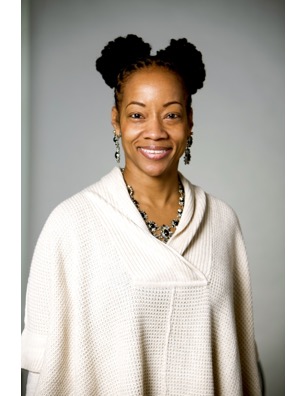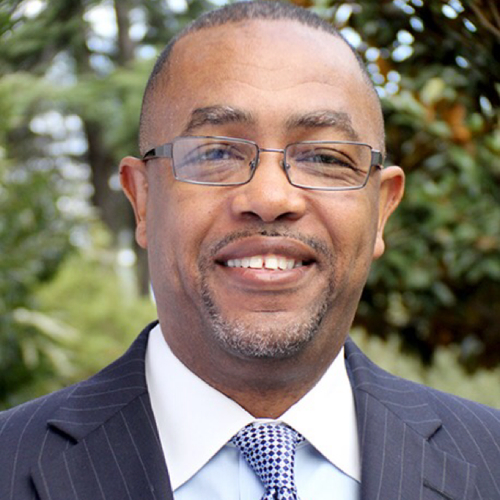Shawnna Sumaoang: Hi, and welcome to the Sales Enablement PRO podcast. I am Shawnna Sumaoang. Sales enablement is a constantly evolving space and we’re here to help professionals stay up to date on the latest trends and best practices so they can be more effective in their jobs.
In celebration of Black History Month, we wanted to lift up the voices of some of the many Black sales enablement experts in our community to share their insights into how sales enablement is helping to reshape the business world to be more diverse, equitable, and inclusive.
Driving a rich and diverse culture is becoming a critical priority for a lot of organizations, and sales enablement can be a strategic lever for organizations to enhance their efforts in this arena because of its unique cross-functional nature. Let’s hear Roderick Jefferson and Simon T. Bailey share their thoughts on how sales enablement improves innovation through collaboration and communication, especially when faced with adversity.
Roderick Jefferson: I believe that sales enablement is all about breaking the complexity of sales into practical ideas, through scalable and repeatable practice that ultimately leads to increased revenue. I also believe that there are three components. There’s communication, there’s collaboration, and there’s orchestration. On the communication piece, it’s all about making sure that we are getting out clear, consistent communications across the entirety of our organization, that everyone understands what’s going on and what’s the value that we bring so that we’re not viewed as the fixers of broken things, or just simply training because we know there’s way more to it than just that. The collaboration piece is making sure that everyone understands their role, that they have to play in order to support the entire organization, as well as our prospects and our customers, and even our partners.
Finally, as the orchestration piece, I always give this analogy of a true orchestra. And what I mean there is you’ve got brass, percussion, strings, woodwinds. Now let’s take those to the different lines of business. Internally, you’ve got sales, sales enablement, product marketing, product management, engineering, HR. They’re all trying to do the right thing for the customer. The problem is there’s really no true orchestra master that’s making sure that they play these in sync that we’re not stepping on top of each other and no sour notes being played until one individual or organization, which I believe is sales enablement, steps up to sustain. Now all of that chaos becomes a beautiful piece of music.
Simon T. Bailey: We know that right now in this world, there is information that is swirly, industries are being transformed, and people are worried. They may not say what’s going on, but they’re thinking, “Does my leader value who I am and my contribution to the team?” And how we have to show up is recognizing that fortitude is the new attitude by helping people fortify their future, to say here’s what’s right. Alright?
Now let me just give you some quick examples of what fortitude looks like. If you saw the movie “300”, right. King Leonidas, right? That’s fortitude. If you saw “Wonder Woman”, that is fortitude in action. If you saw Jennifer Lawrence in “Hunger Games”, that’s fortitude in action. Courage in the midst of adversity.
So, then the question becomes, “Simon, how do I now encourage my team in the midst of uncertainty, especially when people are working remote?” Well, think about when you do your conference calls with the teams that are obviously happening virtually. How do we start with the question? And the question is “What are you most grateful for?” And it’s a different question because you’re probably saying it has nothing to do with business. But it has everything to do with business. It’s counterintuitive. So, allowing people to start with the first exercise, What’s Right. But then to answer a question, “what are you most grateful for?” allows them to be centered when everything is shifting around them. So, if I see how I fit tomorrow, starting today, when I answer I’m most grateful, what they’re doing is they’re setting that intention, creating that tone, and that disposition that I am totally present to this moment. I am supposed to be right here, and everything is working out for my good.
SS: When people feel a sense of belonging in an organization, it enhances psychological safety, which in turn creates an open, collaborative, and supportive culture. Blaire Hervey and Lakisha C. Brooks explain the power of psychological safety in improving team performance.
Blaire Hervey: Give everyone permission to feel the way they’re feeling, to speak how they speak, and to have a space where they can share those thoughts, those emotions, etc. I think at this point, we truly have to activate our superpower of being empathetic and understanding that everyone is feeling and thinking something different, but all of those things add true value to our teams, our departments, and our organizations.
LaKisha C. Brooks: If people feel that I belong, I’m accepted, I am appreciated to have around, morale is going to go up, they’re going to want to come to work. They’re going to want to work for a year. They’re going to want to show their best because they feel that sense of belonging within your organization as well. You’re going to see heightened psychological safety; people are able to share their thoughts. People feel free that they can share whatever is going on without feeling that they’re going to be reprimanded or they’re looking over their shoulder if you are embracing that people feel like this is a safe place for me to share how I feel.
SS: One of the core ways in which enablement can help build a culture that empowers psychological safety is in the hiring and development of sales talent. Blaire, LaKisha, and Kate Philpot share advice on how to prioritize DE&I in the hiring process to improve retention.
Blaire Hervey: Oftentimes we hear these leaders out here saying it’s just too hard to recruit people of color. The talent isn’t there. That’s not true. That is so false. The pipeline is full and I’m still having to compete against those other individuals of color. And me in particular, I don’t have a degree. So, my grittiness and my passion in my experience is that competitive factor.
So, when I get that role, when I get that job, when I get that position or that seat on a board of directors or whatever the case may be, I have to stop thinking it’s because they needed a black person. Or because they needed a woman. It’s because they needed a Blaire. And so, I think about that, I show up with my red hair, my natural hair girl. I show my earrings. I show up with all of my energy, not only for myself and in my authenticity, but because it gives Shawnna the same permission to be herself because she may see me. Maybe not just you, but say, “Wow, I didn’t know I could come to the table like that.” And then we are starting to duplicate that effort and then there’s just less only’s and then we become more of a force together.
LaKisha C. Brooks: First, we want to identify our own biases. This may be our organization may have biases, maybe we’re hiring the same people. Maybe you are someone that hires people and you’re realizing I’m actually hiring the same type of people. I’m having an affinity bias. Or, maybe you realize that people are quitting because they feel that they’re not feeling as though they’re being fairly judged in their performance assessments, because you have a performance bias. So, identify your own biases and then figure out where they’re coming from so that you can actually overcome that and your organization. I also would recommend you guys look at cultural competency as well. And that also talks a little bit about those biases. Next, we want to conduct a diversity assessment. This can be any type of assessment and you can go and ask questions. You can look at some of your records and data as well. You really want to be honest about where you guys fall with your assessment as well. That assessment can be something short or it could be long-term. It could be something that’s inexpensive. It could be something expensive. You have to look at your own organization to see what’s best for you all. Create a coalition. You can’t do this on your own. You want to have people support you.
Kate Philpot: The challenge for a lot of organizations is they have to set up activities that notionally address culture. So, we do an engagement survey every year. We do an exit survey. We do check-ins at the six month and the end of year basis. The question is, what are you doing with the information that comes out of those things? If you’re just going through the exercise without then taking the information that’s produced and making some different decisions as a consequence, then it’s a complete waste of time…What happens if the feedback from the person who’s exited is, “I left because I didn’t feel included”? What conversation happens with the manager of that person who let that happen? And what are the consequences with that manager in order to make sure it doesn’t happen again? Those are the kinds of live conversations that we’re having now. Not only about because you know, by the time somebody exits, it’s too late, let’s be honest. You want to get people feeling included at the beginning of their experience in our organization, rather than by the time they’ve tendered their resignation.
SS: Implementing programs aimed at improving or enhancing organizational health also requires a great deal of behavior change. Aisha Wallace-Wyche and April Terry explain strategies that enablement practitioners can leverage to drive behavior change.
April Terry: We’re doing all of this work and changing our behaviors because we want to see a different result. So, within this final level and the result stages, we are really tying the impact of changes to behavior to metrics in the business. We talked about beginning with the end in mind, right? That’s the whole reason why we’re doing a lot of these programs. So, now that we understand that people are finding it enjoyable, right? They’re engaged, they feel maybe more confident about the lesson or the subject now, before they came in, and went through the program. We’re seeing changes in behavior. Now we’re asking, what does that look like in the context of our business?
Aisha Wallace-Wyche: A lot of times, enablement is looked at as the person that is going to come and save the day and fix it, but in certain circumstances where performance is in question, training may not be the answer. Oftentimes, it could be a systems issue, like lack of access or know-how for a system. Other times it could be compensation or incentive related, the commercial team may not be being incentivized properly, and that’s why you’re not getting the behavior out of them that you want. Then, a lot of times you have to look at your talent, you may not have the right butts in seats. So again, don’t be afraid to speak up after you’ve done some analysis and asked the right identifying questions to just simply state that training may not be the answer.
SS: While sales enablement can be the champion for driving DE&I efforts in an organization, alignment and buy-in with leadership is essential to maximize the impact of enablement programs. Glenn Clark and Blaire Hervey outline tips to secure leadership buy-in and garner support for critical enablement initiatives.
Glenn Clark: My team and I have the opportunity to be on the floor, in the trenches with reps, and making observations that we capture. We also have a sales background as a team. Being salespeople, carrying a bag, so we know what we believe are the ingredients of being a great salesperson, and so we led with that. And then what we asked the sales leadership team to do is decide–based on what’s important to you in terms of success of the business, in terms of revenue–would you adjust these? What would you add? Is there anything we missed? So, I love that approach because what it does is it allows for us to come with an initial recommendation helps increase our value, but it also gives managers an opportunity to weigh in and say, ‘I think I would tweak this’ or ‘I want to add that’. So, we’re gaining buy-in while we’re getting their input so that when we launch it, we actually have a consensus across enablement and senior leadership. And sales reps because their managers have input also tend to buy-in on that as well.
Blaire Hervey: Now you can start with the top and you can try to get their buy-in and, you know, reach out to all the stakeholders. And I hate to say this, but oftentimes you’re going to be disappointed because they’re not going to share the same passion for you because they’re focused on a different end result. That’s fine, starting a grassroots campaign, if you will. And really getting that groundswell by talking to other individuals who may have similar experiences and learning more about how we can attribute to their retainment, then that’s a number. And then that’s something that’s quantifiable you can take back to leadership. You can take that impact that you can make there and let them know that we can make an impact by focusing on diversity, equity, inclusion, and belonging programs. We can make an impact on retainment by this much and by doing so that saves the organization this much, because now we don’t have to rehire and retrain. And additionally, we can focus on grooming these individuals and helping them become our next set of leaders, which also means that could be less for training. And that could be a less tedious succession plan because we already have the folks in house.
SS: Thanks for listening to this special episode to honor Black History Month. For more insights, tips, and expertise from sales enablement leaders, visit salesenablement.pro. If there’s something you’d like to share or a topic you’d like to learn more about, please let us know. We’d love to hear from you.














